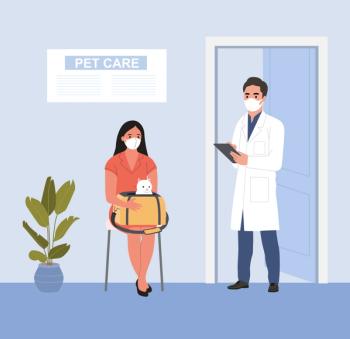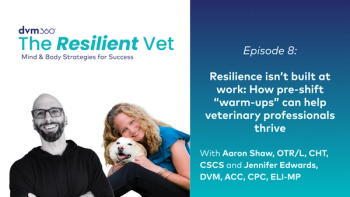
- Firstline May June 2021
- Volume 19
- Issue 03
Burning the candle at both ends
Reducing burnout in the veterinary profession, plus how to put out the fire before it’s too late.
“Keep on keepin’ on.” “Push through.” “When the going gets tough, the tough get going.” “You got this!” “Fake it till you make it.” “Dig deep.” “Every day I’m hustling.’”
Do any of those phrases actually instill peace? I’ve said them all at one point or another during times when, in all honesty, I didn’t have anything left to give. They soon became empty words poured into the hollowness that grew time over time. I was burned out, fried, and frazzled.
How did I get here?
I recall a time when my peers looked to me for guidance and support, but my mental health was suffering. I asked myself, “What can I do to change this for myself and help those who rely on me? I started with research—and found more than I bargained for or was able to digest. I narrowed it down to my industry and, voila—I found validation that I wasn’t crazy.
The dangers of burnout
Burnout is serious. Fortunately, there are many avenues to address it and better—prevent it. According to an article published in the Journal of Veterinary Emergency and Critical Care (JVECC), burnout is common among veterinary nurses/technicians, and (not surprisingly) it’s also associated with numerous undesirable outcomes – both personal and for our patients.
Researchers concluded that there should be more work-related interventions to reduce burnout and a greater focus on improving supervisor relationships and maintaining an appropriate patient-caregiver ratio.1 I agree with their points wholeheartedly but would also add that more supportive measures are warranted such as team wellness meetings, provisions for physical and emotional needs, and recognition of where the team is at as a whole, essentially being able to read the room and respond accordingly.
Preventing burnout
So let’s visit the concept of prevention. How can we stop burnout before it starts? Where you lie in the hierarchical structure at your practice likely determines the impact that you’re able to impart, initially. At the risk of being cliched, every journey begins with that proverbial first step, a small movement creating ripples onward, outward, and upward. Talk to your manager or supervisor about what you’re feeling, seeing, and experiencing. Then, offer a few solutions.
Having a private conversation can eventually lead to practice or company-wide discussion that will hopefully result in positive change. Assessing the care provider-patient ratio and setting protocols in place so that this isn’t overreached is key. Additionally, it’s crucial that you create a platform that allows everyone on your team to be heard. Provide physical outlets and emotional support options for team members. Ensure that personal days are encouraged and utilized. You could also try advocating to make sick leave and personal leave separate. These are just a few ideas and not all my own. Remember, research is your best friend.
Knowing your breaking point
The next part of reducing burnout is being able to identify when you’re singed before you burn up and out. What are some signs that you’re at the brink of burnout? Fatigue, irritability, making mistakes when that is not what you do, feeling ‘off’ – none of these should be ignored nor be a source of shame. Your feelings are valid, they are yours, and will impact not only you but your team.
Speak up, speak out, and you’ll not only help yourself but so many others. Take a deep breath, enjoy nature, or delve into a great book or movie. Get moving—ride your bike, run, swim, or do yoga. Call someone, journal, paint, bake or take time to be with yourself and be OK with who you are, where you are, and if you’re not OK, then you know it’s time to make a change and stop the fire that’s burning you out from spreading.
Reference
- HayesGM, LaLonde-Paul DF, Perret JL, et al. Investigation of burnout syndrome and job‐related risk factors in veterinary technicians in specialty teaching hospitals: A multicenter cross‐sectional study. J Vet Emerg Crit Care. 2020;30(1):18-27.doi: 10.1111/vec.12916
Articles in this issue
over 4 years ago
Empowered women empowering othersover 4 years ago
The medical benefits of urineover 4 years ago
So much to say, so little timeover 4 years ago
Amplifying the voice of veterinary technicians everywhereover 4 years ago
Why and how to educate your clients about One Healthover 4 years ago
6 ways to save time with Fear Freealmost 5 years ago
Pediatric and geriatric anesthesia considerationsalmost 5 years ago
How to kick toxic practice cultures to the curbNewsletter
From exam room tips to practice management insights, get trusted veterinary news delivered straight to your inbox—subscribe to dvm360.




